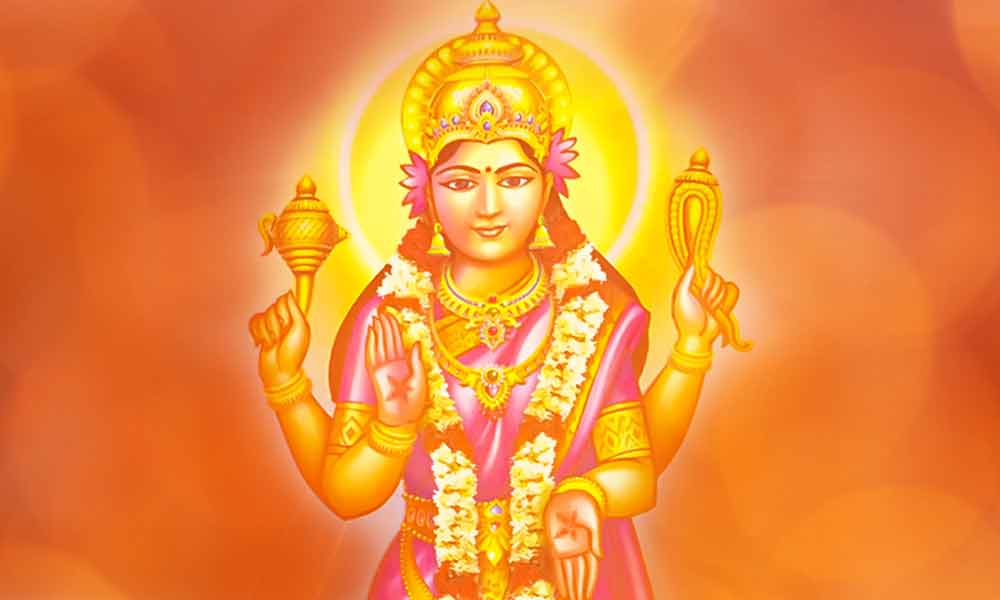The impulse and drive to practice yoga comes from the feminine power of Shakti. But for centuries yoga was practiced almost exclusively by men. In the Yoga Sutras, which were written about 2000 years ago by the sage and scholar Patanjali, it is recommended that the practicing yogi should stay away from “fire, women etc.” during the practice. At that time, yoga was mainly understood as the practice of meditation; control over body and mind to attain higher consciousness. Women were usually not allowed to practice yoga. Until the beginning of the 20th century, when Indian yogis like Sri K. Pattabhi Jois or B. K. S. Iyengar taught the asana-focused yoga practice, that is now widespread in the West, yoga was primarily a domain of and for men. Only slowly did women in India begin to practice yoga and even teach it in some cases. It was not until the 1950s, when Indra Devi in the USA led to a real yoga boom, that it was mainly practiced by woman.
Shakti – the power of the feminine
Shakti is Sanskrit and means something like “energy”. In yoga, Shakti embodies an intense, primeval, archaic, deep red power: ability, skill and strength. During practice, we can experience this energy as ascending Kundalini, which is awakened deep down in the root chakra (pelvis) and winds its way up to the crown chakra (crown of the head). In a spiritual context, Shakti is the great “She”, who personifies herself in a variety of goddesses. And so, in some manifestations of Shakti the maternal and protective aspects are more evident, in others the aggressive and threatening aspects of it.
Shakti’s male counterpart, the great “He”, is Shiva. While the female goddess Shakti stands for the dynamic, active and creative, Shiva – the male god – is the passive, static, resting and contemplative principle. In contrast to the Western modernist view of the feminine, which is constructed and perceived as passive, Shakti is an assertive and expressive force of consciousness. The fact that today there are yoga classes explicitly designed for men, in which powerful asanas are in the foreground, seems to stem from the same modern Western construct of man = strong, woman = weak.
In traditional Chinese medicine, the masculine, the day, the sunshine, the heat and movement are associated with Yang. The feminine, the night, the rain, the cold and the silence have Yin character. The feminine and the masculine principle are two, that mutually influence and complete each other; one side always forms the most important basic condition for the other side. Yin and Yang are in each and every one of us. And so, Shiva may be “the guide of all energies”, but the masculine principle cannot create anything from within itself – it needs the power of Shakti to do so. For the concrete manifestation of these energies the female principle plays the active role. Every change that happens to us and to all living beings therefore has its origin in the transforming, creative power of Shakti.
Kali Yuga. The loser throw
According to ancient Indian tradition, the age gradually degenerates after the appearance of a teaching Buddha. Four world ages (Yuga) are named, which are characterised by decreasing age, as well as general social decay. Similarly, they are named after the decreasing value in the game of dice: the golden Satya or Kṛta-Yuga (“four of a kind”) is the winning roll. This is followed by the silver Treta-Yuga (“Three”) and the copper Dwapara-Yuga (“Two”). Today the world is thus in the iron Kali Yuga, the darker ages, the “One”, the loser throw. An age where materialism dominates. Where nature, constructed as passive and feminine, is seen as an object, that can be exploited almost indefinitely. Where hate, greed and confusion, war and suffering dominate.
With Shakti into a higher yuga
The Hindu tradition mentions three main energies of Shakti power.
Kriya-Shakti is the power of manifestation, action and creativity. We encounter it wherever dormant energies are transformed into concrete action.
Ichchha-Shakti expresses itself in our urge for self-expression and is the power of intention. If we set ourselves an intention before the yoga practice and make ourselves aware of it again and again, then the power of Ichchha-Shakti can unfold.
Jnana-Shakti, finally, is the power that awakens our interest in spiritual topics, which is stirred within us, when we deal with essential questions of life. It can bring about great transformative changes, that are necessary to connect the human being with higher consciousness.
What follows after the end of the Kali Yuga is controversial. According to Hindu tradition, a new golden age may appear immediately afterwards, replacing disorder and suffering with a divine order in an instant. Or there is a slow ascent through a new Dwapara and Treta Yuga to a new Satya Yuga. Whatever may come, today’s world can no longer do without the kindness, tolerance and nurturing care of the feminine Shakti power. We can already today try to create a little golden age by treating ourselves and others with kindness and compassion.
From patriarchy to balance
So, we already carry all the potential within us. Have the chance to throw the dice again. The chance to transform the unilaterally patriarchally dominated social order and bring it back into balance. Ecofeminist theories and movements want to do just that. They try to overcome the domination of patriarchy and the overexploitation of the earth and its effects on society, body and nature. They demand an end to the devaluation and appropriation of the work of caring for human life; a social change. Comprehensive social changes based on the recognition of interdependencies between people and between people and nature.
Ecofeminism is both a theoretical and political proposal and a social movement. The indigenous feminist movement “Mujeres Creando” from Bolivia, for example, does not consider “men” and “women” as opposites. Rather, they see both as a communal political couple. Their aim is that both parts of this couple should exercise political power together, organise society collectively and participate in it. In this way, they strive for a common political representation of women and men in communities. Communities in which women participate as full members in an egalitarian relationship with men and are not merely seen as an addition by the men. Based on the indigenous principle of humane co-existence, they strive for a social space, in which it is possible to shape the relationship between men and women symmetrically. A space in which a balance between the two poles of man and woman becomes possible.
And New Zealand Prime Minister Jacinda Ardem shows, how the transformative power of Shakti can also transform political decisions. In contrast to Austria, where the 12-hour day has returned, she has brought the 4-day week and other flexible working time models into play in the discussion about rising unemployment and a better work-life balance following the Covid19 pandemic.
We all have the chance to roll the dice again
So, the trick is probably to understand and balance the ongoing game between the two principles. The potential of Shakti is in every woman – and in every man. Ela Thole shows in her book “The Divine Shakti – The Power of the Feminine in Yoga” how we can experience this inherent power in all of us. We have it in our hands to create the conditions, under which Shakti can unfold its potential. This requires the basic willingness to let the work of Shakti happen without resistance. A concentrated sadhana (spiritual practice) can help to build up trust and openness towards the very own – sometimes threatening – female strength, to become aware of this power and thus to bring our very own power and the potential slumbering in it into the world. With the hope, that the Kali Yuga will pass into a compassionate and friendly age.
written by our teacher Daniela Hinderer
Ela Thole: The Divine Shakti – The Power of the Feminine in Yoga. Theseus Publishing House, 2015

